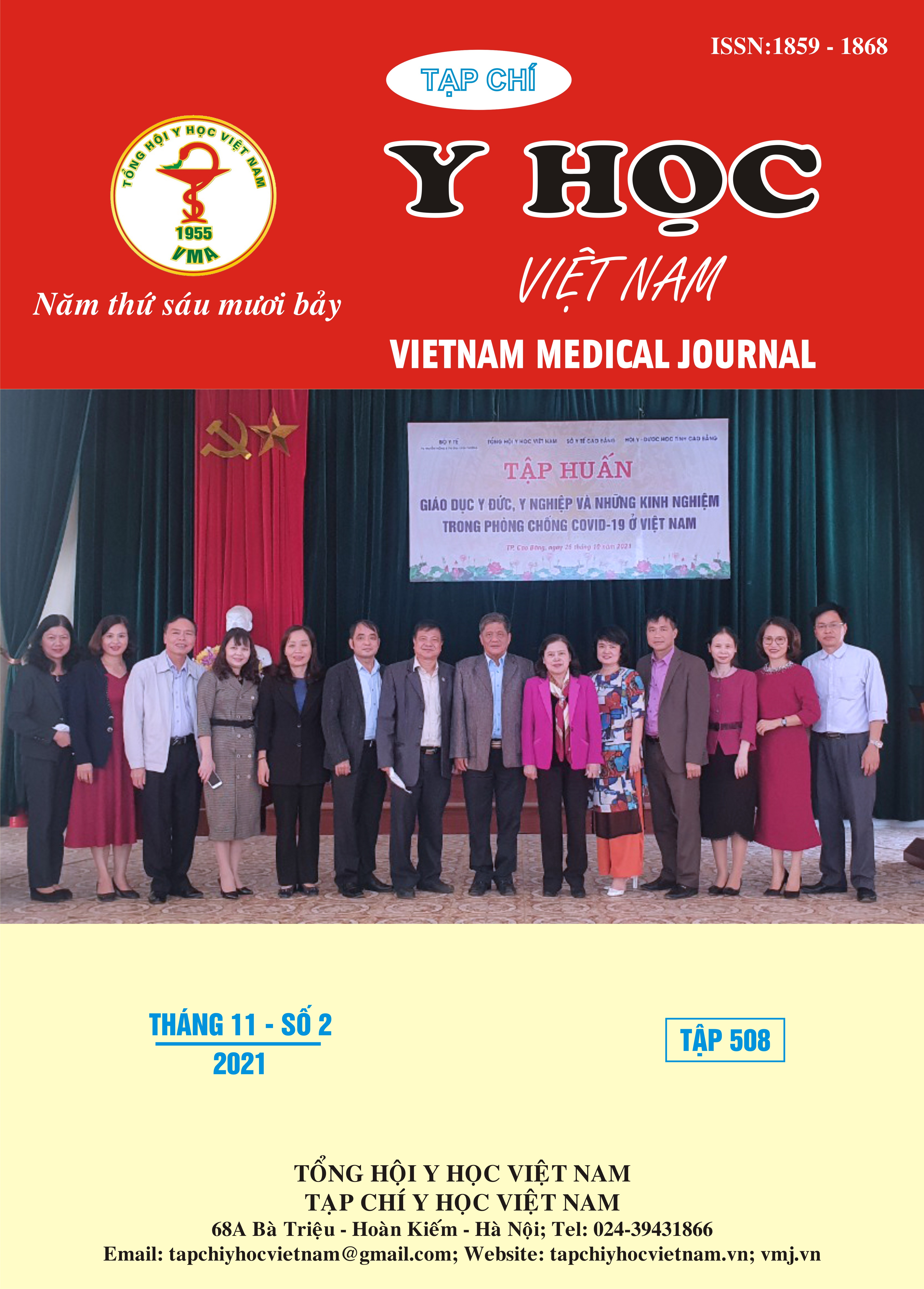CHARACTERISTICS OF PATIENTS WITH COMPLICATED URINARY TRACT INFECTIONS TREATED AT THAI NGUYEN CENTRAL HOSPITAL
Main Article Content
Abstract
Aim: Descripton of the clinical, laboratory anhd bacteriological characteristics of patients with complicated urinary tract infections (UTIs). Subjects and methods: Cross – sectional description of 100 patients diagnosed with complicated UTI at Thai Nguyen National Hospital from February 2020 to august 2021. Result: Male/female ratio = 0.79. The mean age of the patients was 61.64 ± 17.15 with 60% of patients ≥ 60 years old. The mean length of hospital stay of the patients was 14.22 ± 7.49 days with 87% of the patients staying > 7 days. 41% of patients presented with fever, 33% with dysuria and 49% with flank pain. 41% of patients had renal failure, 40% with kidney stones and 32% with immunocomprised disease. 100% of patients have white blood cells in the urine, 44% have red blood cells in the urine, and 45% have positive urinary. Urine culture: 91% were positive for Gram – negative bacteria, of which E.coli accounted for 61%, P.aeruginosa was 8%; E.coli is highly sensitive to fosfomycin (93.8%), meropenem (93.2%), piperacillin + tazobactam (84.9%) and amikacin (71.2%); resistant to >50% of fluoroquinolone antibiotics and cephalosporin generations, >80% of betalactams and folic acid inhibitors. Gram – positive bacteria isolated two strains were Staphylococcos spp. (4%) and Enterococcus spp (5%). In which, Staphylococcus spp was resistant to most of the antibiotic groups being used in the hospital. Conclusion: Complicated UTIs are common in patients who are elderly, have chronic kidney disease, urolithiasis or immunocompromised state. Common clinical symptoms are fever, urinary disturbances. The common bacterial cause of complicated UTIs is E.coli. Many bacteria have high rates of resistance to antibiotics being used to treat UTIs in the hospital.
Article Details
Keywords
mplicated urinary tract infections (UTIs), antibiotic resistance
References
2. Bùi Thị Thu Trang, (2019), "Nhận xét đặc điểm lâm sàng, cận lâm sàng và căn nguyên vi sinh của nhiễm khuẩn tiết niệu tại khoa Thận - Tiết niệu bệnh viện Bạch Mai", Luận văn Thạc sĩ y học, Trường Đại học y Hà Nội, tr. 30-70.
3. Đàm Quang Trung, (2018), "Đặc điểm lâm sàng, cận lâm sàng và căn nguyên vi sinh ở bệnh nhân nhiễm khuẩn tiết niệu tại bệnh viện Xanh Pôn", Luận văn Thạc sỹ y học, Trường đại học y Hà Nội, tr. 53-74.
4. Flores-Mireles A L, Walker J N, Caparon M, Hultgren S J, (2015), "Urinary tract infections: epidemiology, mechanisms of infection and treatment options", Nat Rev Microbiol, 13 (5), pp. 269-284.
5. Gomila A, Shaw E, Carratalà J, Leibovici L, et al, (2018), "Predictive factors for multidrug-resistant gram-negative bacteria among hospitalised patients with complicated urinary tract infections", Antimicrob Resist Infect Control, 7 pp. 111.
6. Li X, Chen Y, Gao W, Ye H, et al, (2017), "A 6-year study of complicated urinary tract infections in southern China: prevalence, antibiotic resistance, clinical and economic outcomes", Ther Clin Risk Manag, 13 pp. 1479-1487.
7. Tandogdu Z, Wagenlehner F M, (2016), "Global epidemiology of urinary tract infections", Curr Opin Infect Dis, 29 (1), pp. 73-79.
8. Bonkat G, Bartoletti R, Bruyère R, Cai T, et al. EAU Guidelines on Urological Infections. Arnhem: European Association of Urology; 2020.


